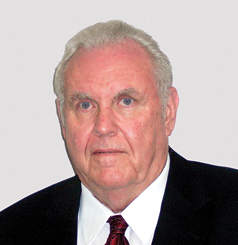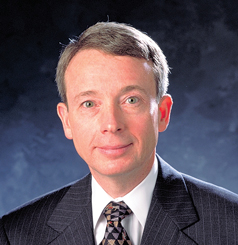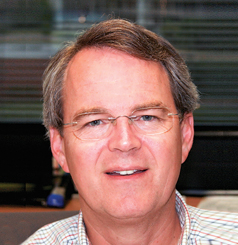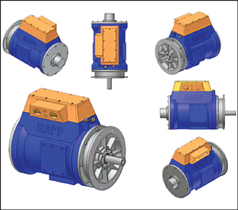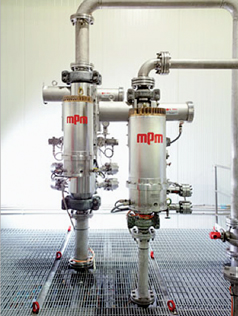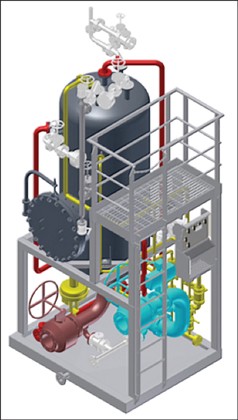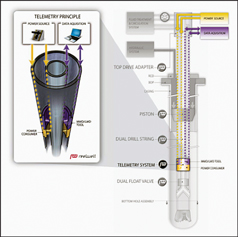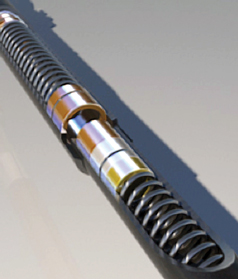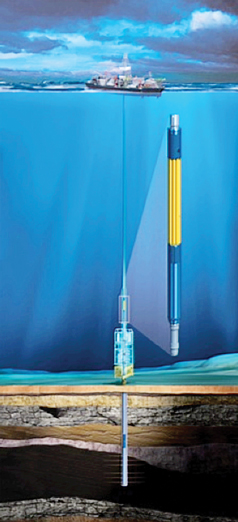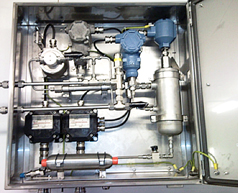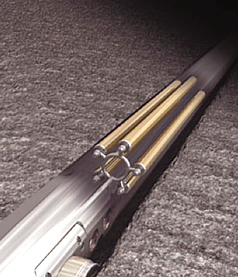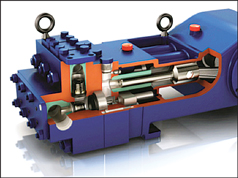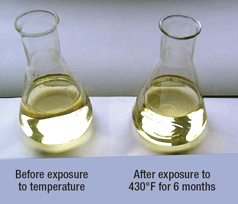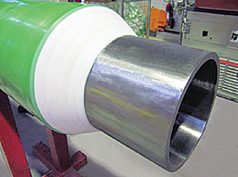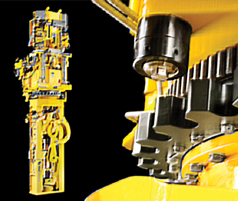Latest technologies, long-term energy strategies distinguish OTC 2010
From climate change policy to the dynamics of salt tectonics, this year’s show features a comprehensive array of all things offshore.
From climate change policy to the dynamics of salt tectonics, this year’s show features a comprehensive array of all things offshore.Nell L. Benton, Associate Editor OTC 2010 continues the tradition of hosting the world’s leading event advancing knowledge and technology resources. As in previous years, the conference will be held in May at the Reliant Park complex in Houston, Texas, from May 3 to May 6. More than 67,721 people from over 120 different countries visited OTC 2009—an impressive level of attendance considering the global economic recession and initial concerns about swine flu. The 2009 exhibition was the second largest in OTC’s 40-year history: over 2,500 exhibiting companies from more than 38 countries filled the exhibition area’s 557,000 square feet. Awards luncheon. Hubert L. (Hugh) Elkins, who served as director of business development for National Oilwell Varco before his retirement, and previously served more than 20 years in executive engineering posts at Hydril, will receive the 2010 OTC Distinguished Achievement Award for Individuals during the awards luncheon Tuesday, May 4. Also at the luncheon, Anadarko Petroleum and Enterprise Field Services will receive the Distinguished Achievement Award for Companies, Organizations and Institutions. The keynote address will be delivered by Charles D. (Chuck) Davidson, chairman and chief executive officer of Noble Energy. Elkins will be given the award for his contributions throughout his more than 53 years in the offshore oil industry. His development of the industry standard of 6-ft-radius technology for subsea wellhead guide bases and blowout preventer stack guide frames, which permitted interchangeability of subsea equipment, revolutionized the industry and paved the way for a new generation of possibilities in subsea drilling. Anadarko Petroleum and Enterprise Field Services will be given the award for their record-setting Independence Hub development and their innovative collaboration in creating a coordinated infrastructure solution that provided access to ultra-deepwater reserves that previously were economically unfeasible. As a result of this collaboration, natural gas from the project represents a 10% increase in the supply from the Gulf of Mexico. SAFE awards. The US Minerals Management Service (MMS) will present the national SAFE awards at the OTC luncheon on Thursday, May 6. This will be the second SAFE awards ceremony held during OTC. These prestigious awards have been presented annually since 1983, making it the longest continuous federal awards program of its kind. The SAFE awards recognize outstanding safety and pollution prevention performance by the offshore oil and gas industry in four categories: drilling contractor, production contractor, high-activity operator and moderate-activity operator. The selections are based solely on objective performance criteria—inspection and incident data normalized for exposure levels—and specific input from MMS district and regional offices. At the OTC luncheon, MMS will also present its Corporate Leadership Awards to outstanding individuals who have raised the bar for safety achievement, improved environmental protection, enhanced resource recovery and conservation, or inspired innovation and outstanding performance by others.
Topical luncheons. The topical luncheons given this year will cover a wide range of categories, giving attendees the opportunity to hear leading experts and engage in discussion on issues currently facing the industry. Topics include deepwater developments, ocean renewable energy, carbon sequestration programs, hurricanes and the application of geosciences to humanitarian needs. It is recommended that participants buy tickets in advance for the topical luncheons, as space is limited. The four luncheons on Monday, May 3, are “Geoscientists without borders: Bringing geoscience and engineering technology from the energy industry to humanitarian needs,” “Thunder Horse and Atlantis deepwater frontier developments in the Gulf of Mexico,” “Energy myths and realities” and “Saudi Aramco upstream challenges and plans.” There will be five luncheons on Wednesday, May 5: “The silver lining of a recession: Managing through the tough times to a bright future,” “Future of oil reserves,” “Opportunities and challenges for deep water,” “Are humans at fault for more and stronger offshore hurricanes?” and “Step ahead in the carbon sequestration program.” The three topical luncheons for Thursday, May 6, will be “Caspian Sea energy developments,” “Conventional offshore oil and gas enters its twilight years: Are there still new frontiers to tackle?” and “US climate change policy: Facing up to costs and sacrifices.” Industry breakfasts and morning reports. Industry breakfasts, organized by OTC and the US Department of Commerce, offer expert views on doing business in emerging areas of interest for the oil and gas industry. This year’s breakfast series focuses on Colombia, Egypt and offshore Australia-New Zealand. Because seating is limited, conference attendees are encouraged to purchase tickets in advance. On Tuesday, May 4, the breakfast will focus on oil and gas regulations, and opportunities for trade and investment in Colombia. On Wednesday, May 5, the breakfast will feature top-level industry executives who will focus on Egypt’s oil and gas industry. The discussion will center around the country’s policies and regulations and current oil and gas activities, as well as the industry’s outlook for the coming years. The last industry breakfast, held on Thursday, May 6, will provide a forum for experts to discuss offshore oil and gas policies, as well as investment and trade opportunities in the oil and gas sectors of New Zealand and Western Australia. The ethics breakfast will be held on Monday, May 3, from 7:30 to 9 a.m. The program, presented by Chip Gill, president of the International Association of Geophysical Contractors (IAGC) and Amos Holt, president of the ASME, is titled “Business ethics, personal honor and professional conduct in international offshore operations.” General sessions. This year, OTC will feature a general session each afternoon of the conference from 2:30 to 4 p.m. The first session takes place Monday, May 3, and focuses on “Jobs and the economy: How the oil and gas industry is creating jobs, leading the economy and impacting consumers.” This session brings together consumers, businesses, energy providers and governmental officials to discuss the complex relationship between energy and economic sustainability. The panel, led by David Holt of Consumer Energy and Sandeep Khurana of Devon Energy Corp., will discuss the importance of energy production in boosting state and national economies and stimulating jobs while protecting the environment. The second session, “What is the right global energy mix? Desired transition pathways to an affordable and secure energy future,” will take place Tuesday, May 4. The panel, chaired by Ahmed Hashmi of BP and Gamal Hassan of Baker Hughes, will address the topic of the desirable energy mix and transition pathways to provide the world with affordable, secure and increasingly lower-carbon energy. In addition, the panelists will discuss how the recent global financial crisis has brought about a significant deterioration in near-term energy demand and a consequential reduction in supply, which has possible longer-term implications. Climate change considerations and greater regulation of the energy mix are also on the agenda. The third session takes place Wednesday, May 5, and focuses on “Addressing social and environmental performance risks in international development projects: From soft awareness to hard management.” The panel, chaired by Chris Ross of Charles River Associates International and comprised of a social performance management expert, two major oil company representatives, an International Finance Corp. representative and an industry technology expert, will address how social performance management is evolving from recognition of “soft” issues (such as working conditions and local culture) to proactive management of these issues using “hard” metrics (i.e., how to monetize the management of these issues.) The last session, “Surface BOP (SBOP) technology: State of the art and future opportunities in deep water,” will take place Thursday, May 6. The session highlights the increased pressure to lower deepwater well costs and the emerging technology trends that could revolutionize the industry. This panel of SBOP technology experts offers a range of perspectives from operators, drilling contractors, consultants and regulators and is chaired by Greg Carter of Nautilus Offshore Co. and Neil Patrick Kavanagh of Woodside Energy Ltd. Next Wave program. This event, designed for upstream professionals under age 35, or those interested in meeting them, will take place on Wednesday, May 5, from 9 a.m. to 2 p.m. The 2010 program will focus on how the industry’s ups and downs affect long-term career goals. The afternoon breakout sessions give attendees the chance to discuss topics such as career paths, geopolitical challenges and “the big crew change.” A reception will be held following the program, from 4 to 6 p.m. at the Reliant Stadium East Club. Technical program. Throughout the conference, more than 300 papers will be presented during the technical sessions. A sample of the topics includes: • LNG and LPG operations offshore • Marine geohazards and GIS applications • Forecasting hurricanes, cyclones and tropical storms • Advances in seafloor imaging applications of multibeam backscatter • New horizons for FPSOs • Salt structural styles informing deepwater exploration • The Perdido ultra-deepwater drilling and production facility The major technical session topics are listed in Table 1. For a more detailed listing of individual papers in the technical program, please check the listings at http://www.otcnet.org/2010/pages/schedule/technical.html.
SPOTLIGHT ON NEW TECHNOLOGY Now in its seventh year, this program will recognize 13 technologies representing 12 companies: Aker Solutions; Bredero Shaw; Expro; FMC Technologies; Halliburton Sperry Drilling; MacDermid Offshore Solutions; Rapp Marine; Reelwell, Schlumberger; TSGroup; Wanner Engineering and WFS Technologies. Winners are selected on five criteria. First, the technology must be new—i.e., less than two years old, dating from the first time it was introduced to the marketplace or was announced or advertised in a conference, press release or trade journal. Second, the technology must be innovative, original, groundbreaking and capable of revolutionizing the offshore E&P industry. For example, an improvement in efficiency of an existing motor would not be considered unless it had the potential to change the way in which the motor would be used in the industry. Third, the item must have been proven through either full-scale application or successful prototype testing. Fourth, the technology must have broad interest and appeal for the industry. Lastly, the technology must make a significant impact, providing sizeable benefits beyond existing technologies. First-of-its-kind liquid-cooled electric motor Rapp Marine received an award for its Rapp Hydema liquid-cooled electric motor. The technology is an electric motor specifically mounted on a Rapp-manufactured gearbox working with a variable-frequency converter to be used for deepwater powering applications. The motor is cooled by a “water jacket” set in a housing that circulates the water through the rotating components of the motor. The motor is designed to work only in a tandem mode with a minimum of two units mounted on the gearbox. Internal heat is removed by means of a special heat exchanger installed internally. The motor produces several times more power and is more space-efficient than comparable air-cooled units.
Multiphase meters employ tornographic technology FMC Technologies received an award for its multiphase meters, which employ tornographic technology to significantly improve measurement accuracy and range for topside and subsea applications. The self-calibrating feature implemented in the meter is a step change from conventional multiphase meters. This new feature is achieved through implementing salinity measurement functionality in combination with the in situ fluid property verification. The meter works equally well for multiphase and wet gas applications with gas-void fractions and watercut ranging from 0 to 100%. The 3D broadband technology is employed to accurately and very rapidly determine how the liquid and gas is distributed throughout the pipe, while at the same time determining precise flowrates of oil, gas and water. For slugging flow regimes, the meter will automatically switch up to five times per second between the multiphase and wet gas modes, bridging a gap in the coverage of previous multiphase meters. The meter has been qualified through the stringent Det Norske Veritas RP-203 qualification process to a 15,000-psi working pressure and a 480°F working temperature. The meter has also been designed for waters 11,500-ft deep.
Flotation unit allows repetition of fluid separation in one vessel TSGroup received an award for its high-performance, TST (CFU) compact flotation unit. The CFU is a vertical pressure vessel designed to deal with the mixture of oil, gas and water from all stages in the treatment process to ensure low oil-in-water content before produced water is either discharged or re-injected. The technology is based on flotation principles whereby the special internals create small gas bubbles that become connected to small oil droplets and raise them to the surface, contributing to the separation process. The flotation process is maintained by the evolution of dissolved gas and/or additional gas injected into the water feed. Oil droplets and gas bubbles are mixed together and due to the low density of this mixture, the oil and gas separate easily from water in the vessel. The special design of the vessel internals allows this process to be repeated within several stages in one vessel, with the number of stages depending on the application in which the technology is used.
Telemetry system enables two-way data communication to downhole tools Reelwell received an award for its telemetry system. This new type of real-time drill pipe telemetry system enables two-way high-speed data communication to downhole MWD/LWD tools. In addition, it offers the ability to transfer large amounts of electrical power to downhole tools. The system was originally developed in combination with the Reelwell Drilling Method (RDM) by using the dualdrill pipes as electrical conductors; however, the system is equally beneficial to conventional drilling. The system is based on dual-concentric drill strings and comprises a stab-in connector design that is mounted in the drill pipe toolboxes and an advanced transceiver technology that sends and receives sensor data. The connector system provides three important functions: electrical insulation, high-pressure seal and low-impedance electrical contact. The transceivers utilize digital signal processing technologies to optimize signal transmission. The data to be sent is made redundant by duplication and interleaving, both in time and frequency, making the system more immune to noise sources. The high-data bandwidth of the system allows any combination of downhole sensors to be monitored continuously, while the power supply capability exceeds the requirements of signal transmission for all existing sensor or directional drilling tools.
New wireless safety valve system Expro received an award for its FlowCAT wireless safety valve system. Developed with the support of Petrowell Ltd., FlowCAT is a new wireless-controlled safety valve system that can be retro-fitted into a well using conventional slickline intervention equipment and procedures. Being controllable from the surface and of a fail-safe closed design, the system offers both functional and safety advantages over existing sub-surface-controlled safety valves (SSCSV) solutions. The valve system also offers a retrofittable solution where no hydraulic control line is installed. Where a capillary string may need to be installed for foam injection purposes, it provides an opportunity to free up the hydraulic control line.
Schlumberger receives two Spotlight awards for subsea innovations Schlumberger received an award for its SenTURIAN subsea landing string electrohydraulic operating system, which is designed to operate from dynamically-positioned vessels in subsea applications such as deep water, high pressure and high temperature. Technological advances have resulted in a shorter and more flexible modular system that allows safe, reliable and efficient completion installation, as well as well cleanup and well testing from vessels operating in water depths to 15,000 ft. The system is the first and only in-riser system designed and certified in accordance with the International Electrotechnical Commission’s (IEC) 61508 SIL 2 reliability specifications for safety-related systems. The design also enables compliance with ISO 13628 standards by providing electronic redundancy and pressure readout for each subsea function. Additionally, SenTURIAN is the first landing string system to employ interchangeable mandrels and pressure-balanced accumulators, allowing both subsea control and accumulator modules to be combined in a single assembly.
Schlumberger also received an award for its subC-racs riser annulus condition surveillance system, which is an automated system for the integrity monitoring assessment of flexible risers and vented emissions. The main functions of the system are to measure free (dry) volume of the annulus, and gas and water vapor flowrates. The system provides continuous surveillance of the vent flow and is readily installed in-line with topsides vent systems. Trends in the measured free volume, flowrates and compositions provide vital data for integrity assessment of various failure drivers of the riser system. These drivers include high concentrations of dissolved CO2 or H2S, condensation trapped within the annulus, increased flowrates due to a harsh operating temperature or degradation of the pressure sheath, and ingress of seawater through the outer sheath. The subC-racs system provides comprehensive and continuous monitoring and quickly identifies emerging trends in the riser annulus system before fatigue damage can occur.
LWD technology enables enhanced reservoir fluid sample recovery Halliburton Sperry Drilling services received an award for its new InSite GeoTap IDS sensor. The new tool enables reservoir fluid samples to be recovered with LWD technology. It also delivers timely downhole capture, surface recovery and identification of multiple samples of formation fluids with minimal contamination. The tool can acquire multiple fluid samples within hours, rather than days of drilling the formation, eliminating the flat time associated with wireline sampling. In high-cost environments, such as deepwater exploration wells, there is significant value in eliminating trips for wireline sampling tools. Also, when samples are taken while drilling, there is less formation contamination from drilling fluids, so extended pump-out times for clean samples are greatly reduced compared to wireline. Valuable data is more rapidly recovered, improving decision-making while drilling the reservoir and enabling more timely solutions.
New triplex pump eliminates problems of packed plunger systems Wanner Engineering received an award for its Hydra-Cell T80 series sealless triplex diaphragm pumps, which are designed to replace packed plunger pumps and their associated problems. The T80 series pumps provide zero leakage, can run dry without damage, will operate with a closed or blocked suction line and can effectively pump abrasive fluids. The T8045, the first in this series of pumps, has a flowrate of 1,500 bpd at a pressure of 3,000 psi. Soon to be released are the T80100 (3,200 bpd at 1,440 psi) and the T8030 (1,000 bpd at 4,500 psi). This technology eliminates packing and plunger wear, leakage, external lubrication and emissions of traditional plunger pumps, while offering lower costs of ownership and maintenance, and longer life than their packed counterparts. The pumps employ asynchronous, hydraulically-balanced diaphragms with a patented valving system, which allows the diaphragms to be hydraulically coupled to the displacing plungers with no mechanical coupling required.
New subsea high-temperature fluid MacDermid Offshore Solutions received an award for its subsea hydraulic control fluid, Oceanic XT900. The fluid is capable of reaching a downhole temperature of 430°F. Production control fluids deliver power to operate downhole safety valves, allowing the flow of oil and gas from hydrocarbon reservoirs. The fluid has been tested for six months at 430°F and has been qualified in accordance with the industry standard for subsea control fluids, ISO 13628-6 Annex C. Oceanic XT900 is biodegradable and enables the sustainable development of ultra-high-temperature wells and reservoirs previously inaccessible to equipment manufacturers and operators. Drilling campaigns may seek even deeper wells both on and offshore due to this technology, and the fluid has the ability to unlock potential value for secure, reliable energy in deep ultra-high-temperature wells.
Styrenic formulations for subsea thermal insulation Bredero Shaw received an award for its subsea thermal insulation, Thermotite Ultra. Styrenic thermoplastics have been used as insulation material for many years due to their intrinsically low thermal conductivity. Advanced blending technology provides materials with a high level of foamability, good ductility, high-impact tolerance and unique thermal properties. A program to develop offshore pipe insulation systems based on styrenic alloys was started in 2007, considering thermal and mechanical performance along with global availability and scope for system adaptation. The challenge was to develop micro balloon-free systems with improved thermal properties, suitable for subsea deployment using all lay methods. This program included compatible field joint systems and is now at the point of completion.
First top drive to meet sixth-generation drilling requirements Aker Solutions received an award for its MH MDDM 1000 top drive. This drive is the first true Modular Derrick Drilling Machine (MDDM) that meets sixth-generation drilling requirements. The top drive is designed to meet the very stringent specifications of 99.9% up-time per annum. Its modular concept allows easy access to replace individual modules, reducing the critical path of the operation and the time to repair from days to hours and from hours to minutes. When parts of modules break down, that specific module can be replaced without interrupting other top drive components. The downtime of overhauls and annual load path inspections is reduced, which can usually only be conducted offline or during a rig move.
|
|||||||||||||||||||||||||||||||||||||||||||||||||||
- Advancing offshore decarbonization through electrification of FPSOs (March 2024)
- Subsea technology- Corrosion monitoring: From failure to success (February 2024)
- Prices and governmental policies combine to stymie Canadian upstream growth (February 2024)
- U.S. producing gas wells increase despite low prices (February 2024)
- U.S. drilling: More of the same expected (February 2024)
- U.S. oil and natural gas production hits record highs (February 2024)

